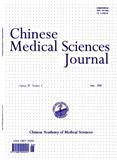
中国医学科学杂志(英文版)(Chinese Medical Sciences Journal ) 知网万方维普
- CSCD
- 科核
- 主管单位:
国家卫生健康委员会
- 主办单位:
中国医学科学院
- 国际刊号:
1001-9294
- 国内刊号:
11-2752/R
- 学科分类:
- 字数:
12000-36000
- 有无基金:
/有基金 100.0%
- 周期:
CN外文-季刊
- 特殊属性:
外文期刊
- 电话:
010-65105897(202304期)
- 邮箱:
actacams@263.net.cn、cmsj@pumc.edu.cn(202304期)
- 复合因子:
0.88
- 综合因子:
0.685
- 收录:
知网,万方,维普
- 级别:
CSCD,科核
期刊简介
《中国医学科学杂志》期刊已被查看: 次
更新频次
高频栏目:
Original Article-83.3%-期平均发文量4篇
Review-100%-期平均发文量2篇
中频栏目:
Case Report-66.7%-期平均发文量2篇
Historical Traces of Medicine-33.3%-期平均发文量1篇
Guideline & Consensus-33.3%-期平均发文量1篇
低频栏目:
Data Article-16.7%-期平均发文量1篇
Perspective-16.7%-期平均发文量1篇
2023年01期其他-16.7%-期平均发文量1篇
Scientific Data Sharing and Reuse_Original Article-16.7%-期平均发文量6篇
Scientific Data Sharing and Reuse_Perspective-16.7%-期平均发文量1篇
Scientific Data Sharing and Reuse_Data Article-16.7%-期平均发文量1篇
All for People's Health——Our Decade_Special Reports-16.7%-期平均发文量2篇
Think Tank Forum-16.7%-期平均发文量1篇
单位占比
普本-37.5%医院-37.5%
研究院所-25.0%
一作占比
/有基金-100.0%投稿指南
1、投稿方式:在线投稿。
2、刊内网址:http://cmsj.cams.cn(202304期)
3、刊内邮箱:cmsj@pumc.edu.cn
actacams@263.net.cn
4、刊内电话:010-65105897
5、出刊日期:季刊,逢季末月出版。
2024年4月17日星期三
《中国医学科学杂志(英文)》投稿须知
【2023年01期信息】
Chinese Medical Sciences Journal (Chin Med Sci J) [ISSN 1001-9294] is a peer-reviewed internationally circulating quarterly journal and is an official publication of Chinese Academy of Medical Sciences & Peking Union Medical College. Publications of Chin Med Sci J cover a broad spectrum of topics in clinical medicine, experimental medicine, preventive medicine, traditional Chinese medicine, as well as interdisciplinary and emerging domains in medicine and healthcare. The journal has been indexed and/or abstracted by multiple important databases, including MEDLINE/PubMed, Scopus, Biological Abstracts/BIOSIS, Chemical Abstracts(CA), Excepta Media Database (EMBASE), Реферативныйж урнал (РЖ), Japan Science & Technology Agency Bibliographic Database (JST), Chinese Science Citation Database (CSCD), and China Scientific and Technical Papers and Citations Database (CSTPCD). Manuscripts from all around world are welcomed.
CATEGORIES OF ARTICLES
Original articles are complete investigations that constitute a significant advance in an established subject of the journal. Article normally includes a structured abstract around 250 words, up to 6 figures or tables, and below 50 references. Other supporting information is suggested to upload as complementary material to be published online.
Reviews address a particular subject and provide a profound and comprehensive look into a field which usually highlights an unresolved questions or emerging topic, and provides developmental trends or directions of investigation based on literatures. Both systematic reviews and narrative review are welcomed, and a non-structured abstract is needed.
Perspective covers a timely and relevant topic of interest in clinical medicine, public health, research, ethics, medical education, health policy, providing expertise and insights into the most recent advances of a specific field. We welcome both solicited and unsolicited articles. Manuscript need to be well focused, scholarly, and clearly presented within 2000 words.
Short communication is a concise article usually within 3000 words, which report novel and original findings and ideas from a preliminary investigation or a pioneer study. Because of the special significance and timeliness, short communications can get expedited processing.
Data articles scientifically describe a dataset in terms of data generation, characteristics, quality control, applicable value, etc. The dataset should be deposited to a recognized database for peer review, and if accepted, for public access and reuse.
Case report narrates a medical problem experienced by one or more patients for clinical, scientific, or educational purposes. Comprehensive presentation with a systematic literature review is of more value to the journal. Authors are expected to use the CARE guideline and the reporting checklist when preparing a manuscript of case report.
Editorial is usually solicited, offering commentary and analysis to the current issue of the journal. Editorials are meant to influence public opinion, promote critical thinking, and sometimes morivate people to take actions on a specific issue.
News and Views introduces and comments on recent development or discovery in medical science, or on major events that have significant influence on the community of medicine and healthcare.
Letter to the Editor discusses an article previously published on Chin Med Sci J or any other journals.
The manuscript should be within 500 words and should be submitted within 1 month of publication of the article in print.
JOURNAL POLICIES
Authorship
An author of an article should substantially participate in the whole scientific processes of study: 1) conception and design, acquisition of data, analyses, or interpretation of data; 2) drafting or revising the article critically for important intellectual content; 3) final approval of the article for submission and publication. Each author takes responsibility and accountability for the published work. All authors of the manuscript must have agreed to the submission and are fully responsible for the content. Contributions of each listed author are subjected to be disclosed at submission and presented under the main text of manuscript once published. Any change to the author list after submission needs to be approved in written by all authors. Contributors who do not meet the criteria for the authorship can be acknowledged under the main text.
Anti-plagiarism
Manuscripts submitted to Chin Med Sci J must be original and has not published in any language in any other journal, either in print or electronically. Authors should declare that the manuscript is original and no part of their manuscript has been published elsewhere. It is authors’ responsibility to acquire authorization from copyright holder in case any part in manuscript was intellectual property of people other than authors.
Conflict of interests
Each author should disclose potential conflict of interests in the past 36 months, including funding, employment, and personal financial interests relevant to the subjects of their manuscript. Authors who do not have relevant conflicts of interests should indicate no such interests as well. A disclosure of conflict of interest is mandatory for all submissions.
Biomedical ethics
Studies that involve human being should be compliant with the biomedical ethicprinciples, and provide document of approval from the institutional review board/committee at submission. Clinical trials that have been registered on appropriate online registry will be given priority in editorial processing. Studies using experimental animals should follow the institutional and/or national guidelines for animal treatment, which need to be stated in the method section of the manuscript.
Funding
Grant(s) claimed in an article must be relevant to the manuscript in term of researchers, project topic, and implement period. It is author’s responsibility to demonstrate the relevance between the manuscript and the funded project.
Online publication
Accepted article will be published online before assigned to a printed issue. A PDF version without pagination will be sent to corresponding author for proofreading. Online published articles will be submitted to the PubMed and become searchable and citable worldwide.
Data sharing
Chin Med Sci J encourages authors to deposit research data (e.g., raw data, and figures, etc.) to the public data repositories. Chinese authors can use the Population and Health Data Archive (PHDA, https://www.ncmi.cn/), where deposited dataset will be assigned an independent identifier for citation and reuse. Other repositories listed by re3data.org are also acceptable.
Open access
Articles published in Chin Med Sci J can be immediately and permanently accessed to all internet users at no charge. Authors retain copyright of the publication and license exclusive rights of their article to Chin Med Sci J under the Creative Commons CC-BY-NC 4.0 license. More information about open access can be found at https://creativecommons.org/licenses/by-nc/4.0/.
PREPARING MANUSCRIPT
Chin Med Sci J complies with the Uniform Requirements for Manuscripts Submitted to Biomedical Journals: Writing and Editing for Biomedical Publication (http://www.icmje.org).
Title page
All manuscript should begin with a title page which includes the title of manuscript, the names, affiliations (department, institute, city, zip code, country) and contact information (phone and email) of each author, as well as the author’s contributions to the study. Information about funding, ethical approval, and trail registry, previous publication, or presentation at a meeting in part
or on the whole, if applicable, should be stated in this section. If the authors have deposited research data to a repository, it should be indicated in the title page, along with a URL link for editor and peer reviewers to access.
Abstract and key words
A structured abstract in at least 250 words is required for original article. For other types of article, e.g., reviews and case reports, a non-structured abstract of around 150 words is need. Authors should provide a list of 3 - 5 key words to assist the indexing of the article. Please refer to MeSH database for acceptable key words. A bibliographical description of the article in Chinese, which include title, authors’ name and affiliation, abstract and key words, need to be provided by authors once a manuscript is accepted for publication, which enable the article being searchable with Chinese keyword by Chinese database users.
Main text
For original articles, the main text should include the following sections:
Introduction: clearly state the purpose and, where applicable, a brief and relevant background of the study, thus allowing readers to understand the context and evaluate the results of the present study.
Materials and Methods: describe the subjects
(including criteria for selection) and the equipment involved as well as the methods used. The sources of all equipment, drugs, chemicals, and experimental animals or cell lines must be identified. The methodology in this section must contain all the necessary information that facilitates repeatability by other researchers.
Results: present and illustrate findings objectively, logically and concisely in this section. The collected data and their statistical treatment should be sufficient to justify the conclusions. Use tables and figures appropriately. It is not necessary to narrate data displayed in tables and figures, neither is to interpret any data in the result section.
Discussion: provide interpretation of the results in relation to the current knowledge of a particular subject. Emphasize innovation and importance of the study, followed by conclusions or a summary. Limitations of the current study that may bear on the interpretation of the results should be addressed.
References
References should be numbered consecutively in the order of citation in the text. For citing an article of a journal, the volume, issue, pages, and doi are essential information. Please refer to Samples of Formatted References for Authors of Journal Articles (https://www.nlm.nih.gov/bsd/uniform_requirements.html) for citations of book, other monographs, pre-print, online resources, database on internet, dataset, etc.
A typical reference in Chin Med Sci J is as follows:
1. Omary MB, Ku NO, Strnad P, et al. Toward unraveling the complexity of simple epithelial keratins in human disease. J Clin Invest 2009; 119(7): 1794-805. doi: 10.1172/JCI37762.
Figures and tables
Figures and tables should be numbered in order they are cited in the text and appended at the end of manuscript with legends. All figures should be in high resolution (minimum 300 dpi) in RGB color mode, and in format of TIFF, JPG, or PDF. Use the same typeface in all figures. Figures should be minimally processed to factually represent the original data. If any figure or table that has been previously published, permission from the copyright holder is required before publication.
Units of measurement
In tables, figures, and throughout the main text, the International System of Units (SI) should be adopted as the standard. For instance, data should be presented in metric units, temperature in degrees Celsius, etc.
Abbreviations and acronyms
Only use standard abbreviations and avoid abbreviations in article title. The full term for which an abbreviation stands should precede its first use in the text unless it is a standard unit of measurement.
SUBMISSION
Chin Med Sci J uses the online submission system, which can be accessed from the Author Center on the homepage of journal website http://cmsj.cams.cn. First time authors need register an account with a password. Authors are expected to upload the manuscript along with supporting documents at submission, which commonly include electronic copies of ethical approval from institutional review board, funding support documents, scanned copies of publishing license agreement, and author contribution form with signatures of each author to the submission system for editorial review. All figures in original high resolution must be uploaded in a compressed file in the manuscript submission processes. Any missing items of above will affect and delay the editorial processing.
Tables and figures that belong to the study but not to be published in printed issue, or video and audio that can enhance the manuscript presentation, can be submitted as complementary to the system and published online. A cover letter for each submission is favorable.
Author can recommend 2-3 reviewers who has expertise in the study field and is able to provide impartial assessment to the manuscript.
EDITORIAL PROCESSES
All submissions will go through plagiarism and ethical assessments at the initial check. Subsequently, manuscripts receive rigorous peer reviews for evaluation of novelty, scientific accuracy, and importance. Chin Med Sci J employs double-blind peer review. A final decision on the manuscript will be made based on at least 2 peer reviewer’s comments. For original research, statistical review is always applicable. It usually takes about 3 months for author to receive a final decision. Manuscript is sent to authors for revision according comments of reviewers. Authors are expected to make necessary changes with response to each of comments, and return in 3 weeks. The accepted manuscript will be published online directly or after editing. Clinical research that has been registered in WHO recognized clinical trial registries will get fast track for editorial processing. To check the status of a manuscript, authors may log in the online submission system, or give a phone call to the editorial office (86-10-65105897) at Monday to Friday, 9:00 am – 17:00 pm (UTC+8). Authors should not submit manuscript elsewhere before receiving a decision e-mail from the editorial office.
CORRECTION AND RETRACTION
When errors were noted in a published article, a correction or erratum on part of the work will be published. In case the honesty or integrity of a published work was questioned, we will inform the institutions of authors for further investigation, and may publish an express of concern or print a retraction for the published article depending on the results of investigations.
PUBLICATION FEE
Articles once accepted, authors are subjective to pay the article processing charge (APC) prior to publication at rates of CNY 800 (for Chinese authors) or 150 USD (for overseas authors) per typeset page regardless of manuscript category. It is free of charge for all commisioned article. APC waiver or discount requests from authors will be considered at editor’s discretion on a case-by-case basis.
Editorial Office
Chinese Medical Sciences Journal
9 Dongdan Santiao, Beijing 100730, China
Tel: 86-10-65105897
Fax: 86-10-65133074
E-mail: cmsj@pumc.edu.cn
Updated on March 10, 2022
《中国医学科学杂志》同类医卫综论期刊
-
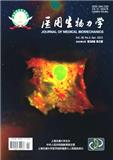
医用生物力学
北核,CSCD,科核,武A
CN中文-双月刊影响因子1.164
-
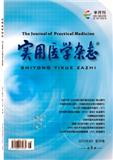
实用医学杂志
北核,科核,武A+
CN中文-半月刊影响因子1.949
-
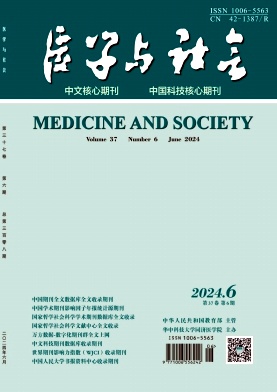
医学与社会(原:同济医科大学学报.社会科学版)
北核,科核,CACJ-核心,AMI扩,武B+
CN中文-月刊影响因子2.142
-
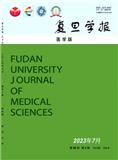
复旦学报(医学版)
北核,CSCD,科核,武A
CN中文-双月刊影响因子1.332
-
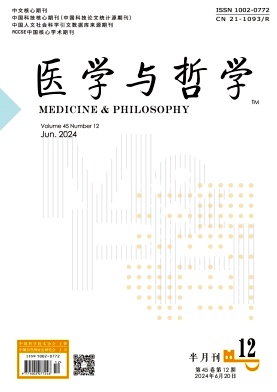
医学与哲学(原:医学与哲学(A)、(B)等)
北核,科核,科核,武A-,AMI扩
CN中文-半月刊影响因子1.425
-

中国全科医学
北核,科核,武A+
CN中文-旬刊影响因子2.882
-
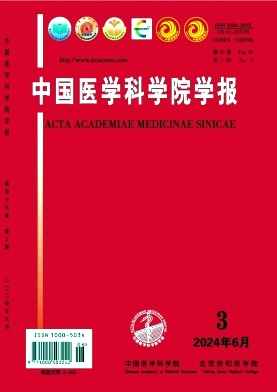
中国医学科学院学报
北核,CSCD,科核,武A
CN中文-双月刊影响因子1.431
-
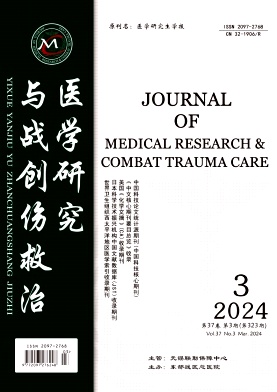
医学研究与战创伤救治(原:医学研究生学报;金陵医院学报)(不收版面费审稿费)
北核,科核,武A
CN中文-月刊影响因子1.579
常见问题
-
中国医学科学杂志杂志社官网、联系方式是什么?
中国医学科学杂志杂志社官网:http://cmsj.cams.cn
投稿网址:http://journal13.magtechjournal.com/journalx_cmsjen/authorLogOn.action联系电话:010-65105897(202304期)
投稿邮箱:actacams@263.net.cn、cmsj@pumc.edu.cn(202304期) -
中国医学科学杂志杂志是核心期刊么?
中国医学科学杂志是核心期刊,级别是:CSCD,科核, 是:医卫综论分类下的知网,万方,维普收录的期刊。
-
请问你们是中国医学科学杂志杂志社吗?
我们不是《中国医学科学杂志》杂志社。本站主要从事期刊信息展示与期刊推荐,不是任何杂志官网,直投稿件请联系杂志社。本站仅提供免费的学术指导、论文辅导、期刊投稿信息整理收集服务。
-
你们指导服务后可以保证文章被发表吗?
期刊发表的成功与否,主要取决于文章内容的质量。编辑老师会根据研究领域、创新性等多因素进行考量。我们会帮助您理解期刊的发表要求,助力提升发表几率,从而增加发表的机会。
-
晋级论文能否在报纸上发表?
在学术界,论文的发表往往被视为研究者职业发展的重要一环。晋级论文,即为了获得更高职称或学术地位而撰写的学术论文,通常需在专业期刊上发表。然而,许多人可能会问
